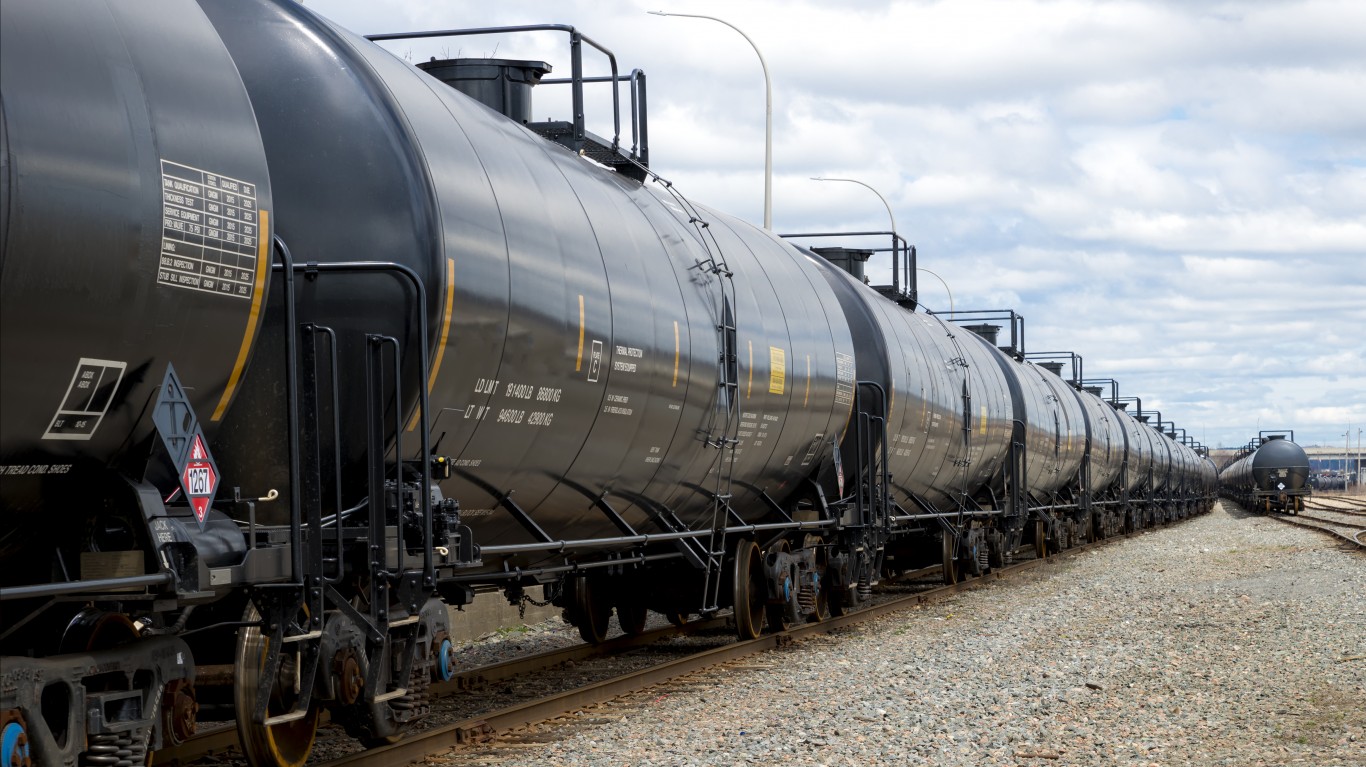
CSX Corp. (NYSE: CSX) was one of the worst-performing railroads in 2019, and with market uncertainty at an all-time high, the future for CSX stock is a little hazy. While COVID-19 is having an impact on supply lines and freight across the world, challenges in the oil market have appeared between Russia and Saudi Arabia that could affect domestic oil production.
The Dow Jones industrial average, S&P 500 and Nasdaq have suffered since mid-February, and no single sector or industry has not been touched. CSX has obviously been hurt in this time, but after underperforming all of 2019, valuation questions arise.
[in-text-ad]
Quarterly Fundamentals
When CSX released its most recent quarterly results in mid-January, the company said that it had earnings per share of $0.99, on revenue of $2.89 billion. Note that revenues shrank 8% year over year. In terms of the full-year numbers, revenue was down 3% and per-share earnings were up 9%.
Rising profits on falling revenues typically means cost reductions. CSX posted its lowest full-year operating ratio ever in 2019, 54.8%, which was significantly better than its 2018 ratio of 60.3%.
Note that a railroad’s operating ratio is nothing more than total expenses divided by revenue. In this case, a lower score is better. After a questionable 2019, CSX had some good news to tell investors.
On the other hand, CSX had the poorest performance among the U.S. railroad stocks in 2019. Of the four U.S.-based, independent freight haulers, the stock prices of all but CSX performed better than the S&P 500 for the year.
Norfolk Southern Corp. (NYSE: NSC) shares added just over 30% last year, Union Pacific Corp. (NYSE: UNP) added 34.3% and Kansas City Southern (NYSE: KSU) gained a whopping 62%. CSX stock posted an annual gain of just under 17.7%, well short of the S&P 500’s rise of around 29% and the Dow Jones Transportation index’s 19% gain.
Looking ahead, CSX has projected 2020 revenue to be flat to down 2% year over year. According to the firm, the operating ratio for the year will rise to 59% and capital expenditures will range between $1.6 billion and $1.7 billion, more or less flat compared with 2019. CSX will continue to return capital to shareholders and is committed to maintaining a “strong investment grade rating.”
Container shipping from China to the U.S. west coast will remain low or fall even more for at least another six weeks. One question that investors are asking is whether business will pick up enough in the rest of the year to overcome what seems to be a catastrophic first quarter. Investors have raised their bets in recent days that the spread of the coronavirus has begun to slow in China and that business will return to normal fairly soon.
Riding the Rails on Corona
The Association of American Railroads (AAR) recently reported U.S. rail traffic for the week ending March 7. Total U.S. weekly rail traffic was 462,303 carloads and intermodal units, down 9.1% compared with the same week last year.
Total carloads for the week came to 229,742, down 3.5% compared with the same week in 2019, while U.S. weekly intermodal volume was 232,561 containers and trailers, down 14.1%.
John T. Gray, AAR senior vice president, commented:
That said, rail intermodal loadings last week were down noticeably more than the norm over the past year. With the number of ships arriving at West Coast ports from Asia down sharply due to the coronavirus, it stands to reason that railroads are beginning to feel an impact too, at least in terms of intermodal. It’s impossible to quantify that impact with precision.
Looking at a longer time frame, in the first 10 weeks of 2020, U.S. railroads reported cumulative volume of 2,323,120 carloads, down 6.2% from the same period of last year, and 2,475,466 intermodal units, down 7.7% year over year. Total combined U.S. traffic for the first 10 weeks of 2020 was 4,798,586 carloads and intermodal units, a decrease of 7% from last year.
For a basis of comparison, total rail traffic was down 5.0% in 2019 and intermodal traffic was down 5.1%.
Falling Oil
Here’s the thing. Oil prices have fallen off a cliff since the Russians and Saudis started a price war. As recently as February 19, oil prices were nearly $55 per barrel, and this past week they have reached as low as $30 per barrel.
With oil playing a large role in what this rail services company ships and consumes, the price drop could have a mixed effect on CSX. In the past, low oil prices have hurt revenue growth among railroads as fewer new wells come on line and lower amounts of fuel are transported.
At the same time, CSX spent around 7.5% of its revenues on fuel in 2019. With declining fuel prices, the firm could see an increase on the bottom line.
Ultimately, we won’t have a good idea about oil until the international picture with Russia and Saudi Arabia is settled.
Get Ready To Retire (Sponsored)
Start by taking a quick retirement quiz from SmartAsset that will match you with up to 3 financial advisors that serve your area and beyond in 5 minutes, or less.
Each advisor has been vetted by SmartAsset and is held to a fiduciary standard to act in your best interests.
Here’s how it works:
1. Answer SmartAsset advisor match quiz
2. Review your pre-screened matches at your leisure. Check out the advisors’ profiles.
3. Speak with advisors at no cost to you. Have an introductory call on the phone or introduction in person and choose whom to work with in the future
Get started right here.
Thank you for reading! Have some feedback for us?
Contact the 24/7 Wall St. editorial team.
 24/7 Wall St.
24/7 Wall St.